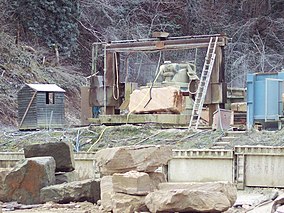Chilmark_Quarries
Chilmark Quarries
Stone quarry in Wiltshire, England
Chilmark Quarries (grid reference ST974312) is a 9.65 hectare biological and geological Site of Special Scientific Interest (SSSI), in the ravine south of the village of Chilmark in Wiltshire, England.
The article's lead section may need to be rewritten. (July 2020) |
The SSSI was first notified in 1977.[1] Its importance as a home for bats led to the site being designated in 2005 (together with Fonthill Grottoes) as a European Special Area of Conservation.[2]
The western section of the site is in Chilmark civil parish, while the eastern section (separated by a minor road) is in Teffont parish.

